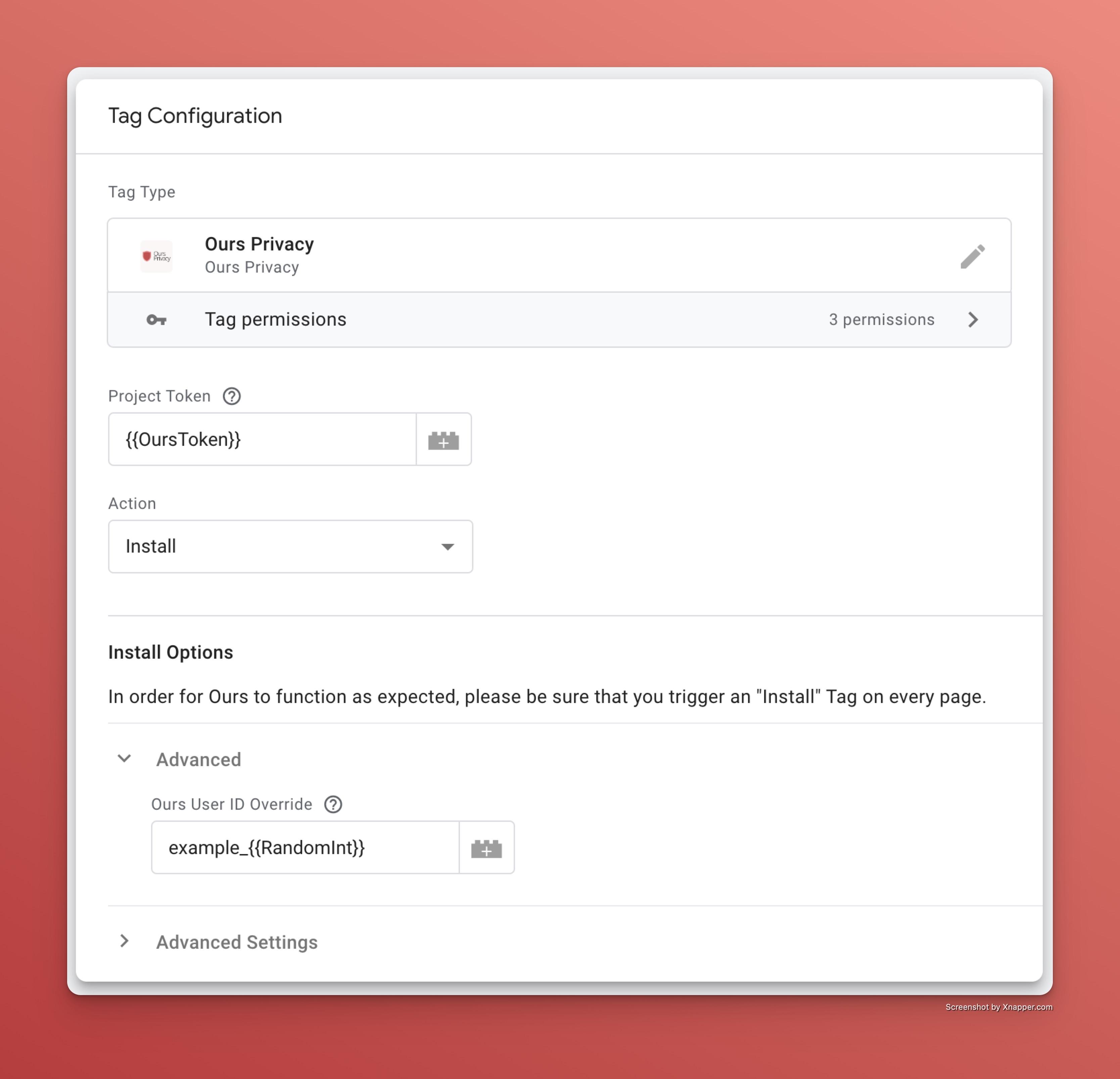Visitor Identity and Matching
Learn how Ours tracks visitors across sessions and devices using cookies, how visitor identity works, how visitors are matched across sessions and domains, and how unified user profiles are created.
Visitor Identity and Matching
Ours Privacy tracks visitors across sessions and devices using a combination of first-party and third-party cookies. This guide explains how visitor identity works, how visitors are matched across sessions and domains, and how unified user profiles are created to provide a complete view of visitor behavior across all devices and interactions.
Cookie-Based Tracking
Ours uses two types of cookies to track visitors:
- First-Party Cookie: Stored on your domain, this cookie helps track visitors within the same domain.
- Third-Party Cookie: Stored on our CDN domain, this cookie enables cross-domain tracking.
These cookies work together to maintain visitor identity across different sessions and domains.
Cross-Domain Tracking
The third-party cookie stored on our CDN enables tracking visitors across different domains. When a visitor visits any domain where Ours is implemented:
- The third-party cookie is read from our CDN
- If a matching visitor ID is found, the visitor is identified as the same person
- If no match is found, a new visitor ID is generated and stored in both cookies
This mechanism allows you to track the same visitor across multiple domains without requiring any additional configuration.
Visitor Re-Identification
You can re-identify visitors by including their external_id or email in your tracking calls.
HTTP API
Include external_id or email in your API requests to our HTTP API.
Sources
Include external_id or email in your webhook payloads.
When these identifiers are provided, Ours will use them to look up and match the visitor in our database.
Unified User Profiles
When visitors have an external_id, Ours automatically creates unified user profiles that merge data from multiple visitor sessions. This enables seamless cross-device tracking and provides a complete view of user behavior.
How User Profiles Work
A User is a unified profile created by merging multiple visitor records that share the same external_id. This happens automatically when:
- A visitor logs in on different devices using the same account
- Multiple visitor sessions are associated with the same
external_id - Cross-device interactions are tracked through consistent identification
User Profile Creation Process
- Detection: When an event is processed, Ours checks if the visitor has an
external_id - Lookup: If present, Ours searches for all visitors in the account with the same
external_id - Merging: Visitor records are sorted by
last_seen_at(newest first) and properties are merged - Unified Profile: A single user object is created with the most up-to-date information from all sessions
Merging Strategy
The user profile merging follows these principles:
- Newest Data Wins: Properties from the most recent visitor session take precedence
- Complete Coverage: All properties from all sessions are preserved, with newer values overriding older ones
- Time Spanning: The user's
first_seen_atuses the earliest timestamp, whilelast_seen_atuses the latest - Deterministic: The merge process is consistent and predictable
Example User Profile Creation
Consider a user who interacts with your site across multiple devices:
Device A (Mobile):
external_id: "user123"email: "user@example.com"first_name: "John"last_seen_at: "2024-01-15T10:00:00Z"
Device B (Desktop):
external_id: "user123"email: "user@example.com"last_name: "Doe"city: "San Francisco"last_seen_at: "2024-01-16T14:30:00Z"
Resulting User Profile:
external_id: "user123"email: "user@example.com"first_name: "John"last_name: "Doe"city: "San Francisco"first_seen_at: "2024-01-15T10:00:00Z"last_seen_at: "2024-01-16T14:30:00Z"
Accessing User Data
During destination dispatch, you can access user properties using the user.* prefix:
user.email- The user's email addressuser.first_name- The user's first nameuser.city- The user's cityuser.external_id- The user's external identifier
This unified data is available alongside visitor and event data, providing maximum flexibility for destination mapping and analytics.
Passing Visitor ID Between Domains
If you need to manually pass the Ours visitor ID between different domains, you can do so using query parameters:
// Example URL with visitor ID
https://example.com?ours_user_id=${localStorage.getItem('ours_device_id')}This is useful when you need to maintain visitor identity across domains that don't share the same cookie domain.
Custom Visitor ID Initialization
You can provide your own visitor ID during initialization of the Ours Privacy SDK. This is useful when you have your own visitor identification system:
JavaScript Implementation
ours('init', '<ours web api key>', {
visitor_id: '<your custom visitor id>'
});GTM Implementation

Note: When using custom visitor IDs, ensure you have a reliable system to generate and persist unique IDs for each visitor across different visits.
Best Practices for Identity Management
-
Use
external_idfor Consistency:- Assign a unique
external_idto visitors to ensure accurate cross-device and cross-session tracking. - This enables automatic user profile creation and unified data across all devices.
- Assign a unique
-
Send Persistent Identifiers Early:
- Include visitor properties like
emailduring initial interactions to improve matching accuracy. - Set the
external_idas early as possible in the user journey to maximize profile unification.
- Include visitor properties like
-
Manually Pass
ours_user_idWhen Needed:- Use the
?ours_user_idquery parameter to maintain identity across domains. - This is useful when cross-domain tracking is needed but cookies aren't shared.
- Use the
-
Leverage User Profiles for Analytics:
- Use
user.*properties in destination mappings to access unified cross-device data. - Combine user, visitor, and event data for comprehensive behavioral analysis.
- Use
-
Monitor Profile Merging:
- Track how user profiles are being created and merged across your visitor base.
- Ensure
external_idconsistency across all touchpoints for optimal profile unification.
How is this guide?